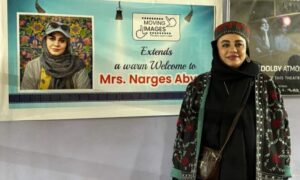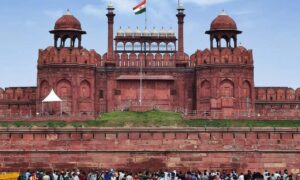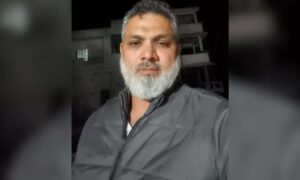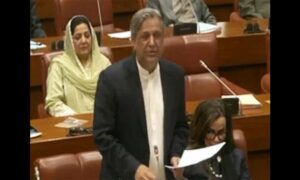
Hyderabad: Dr Sisinthy Shivaji, one of the first Indian biologists who conducted research at Arctic and Antarctica passed away today in Hyderabad.
Dr Shivaji, who published over 350 scientific papers, two books in an outstanding career of over four decades died at the age of 73 in the early hours of Monday. He retired as Director-grade scientist of the CCMB and later served as Emeritus Director at Prof Brien Holden Eye Research Centre of the LV Prasad Eye Institute.
It was during the heady days of Antarctica research in the early 1980s that the young scientist from the CCMB (Centre for Cellular and Molecular Biology) Dr Shivaji was selected as part of the Indian contingent to travel to the icy continent with the sea expedition in 1984.



He returned, after studying the life of microorganisms, the hostile environment and biological aspects on the continent. Very soon, he landed in a spot for expressing candid views on the expedition, the claims made by the first expedition led by the secretary of the Department of Ocean Development, Dr S Z Qasim to the Union Department of Science and Technology and Media.
There was a lot of excitement about the Antarctica expedition in Hyderabad too. The second one was led by Dr Harsh K Gupta, who was a senior scientist at the NGRI (National Geophysical Research Institute). As a science reporter with the PTI, I could interact with the scientists who were part of the long sea voyage to Antarctica, their research and life experiences with icy cold conditions, Penguins, etc.
Shivaji was the first biologist who was part of the expedition. There were also a few scientists from NGRI in the initial expeditions.
Polar scientist of repute
Dr Shivaji was among the first few scientists I had met from CCMB during the early 1980s (those days, it was part of the RRL-Hyd, which is now the IICT), along with Dr P M Bhargava, D Balasubramanian, Sushil Chandani, Dr M R Das, etc. A bold and committed scientist, Dr Shivaji found full backing from Dr P M Bhargava, who was heading the CCMB and withstood the ‘pressure’ from some quarters in the Delhi science establishment for his bold views.
Sharp, a bit bulky and always a brisk walker in the laboratory, Shivaji was very meticulous and particular about representation and interpretation of scientific facts. It was not easy to report his work because he was also modest. Yet, Dr Shivaji was always helpful in explaining/clarifying doubts about research work in molecular biology and projects in CCMB.
Dr Shivaji was among the first few researchers to join the fledgling Biology Group led by Dr P M Bhargava. In 1987, the CCMB got its own, full-fledged facilities and emerged as a national institute. It was inaugurated by Rajiv Gandhi, the then Prime Minister at a grand event graced by half a dozen Nobel laureates, including Dr Francis Crick, Co-discoverer of the ‘Double Helix’ structure of the human DNA (Deoxyribonucleac acid). He was very helpful to the media interested in covering in depth by explaining and simplifying some of the lectures.


A remarkable contribution of Dr Shivaji’s work from Antarctica was the discovery of three clusters of bacteria which had no relationship with any known bacteria up to that time. His experiments in the Southern Ocean in Antarctica along with a German team were aimed at studying carbon sequestration, ocean temperature warming and addition of iron to bacteria and their role.
Dr Shivaji had conducted some important work on microorganisms in Antarctica and brought back some samples, on which he pursued work doggedly for decades. In addition, he visited the Himalayas, some extreme spots to study microorganisms. In the process, the research project took him to the Arctic too. Thus, Dr Shivaji went on to become the first biologist from India to visit both the Arctic and Antarctic for scientific research.
The work also won him recognition in the form of the Antarctic Award for excellence in the field of Biological Sciences in 2002 and the National Award in Polar Sciences and Cryosphere in 2016. He also got the E K Janaki Ammal award for research in Microbial Taxonomy (2018) given by the Government of India.
Dr Shivaji’s close rapport with Dr Bhargava in the research area of seminalplasmin protein led to a series of research papers and ultimately to a book on the subject co-authored with Dr Bhargava. Another project, where Dr Shivaji was closely involved in testing one theory of the origins of life. The CCMB team with Bhargava and Shivaji collaborated with Prof U R Rao of the Department of Space, TIFR and Dr Jayant Narlikar, the famous astrophysicist who, with the renowned Fred Hoyle proposed the extraterrestrial origins of human life. A high-altitude balloon was launched by the Balloon Facility Centre of the TIFR, Hyderabad and Dr Shivaji was to collect samples of microorganisms from about 40 km high in the atmosphere and study them, recalls Chandana Chakrabarti, former CCMB scientist in a social media post on Dr Shivaji.
LaCONES & LVPEI
One of the lasting contributions of Dr Shivaji was the key role he played in the setting up of the LaCONES (Laboratory for the Conservation of Endangered Species) in Hyderabad, along with the then Director of CCMB, Dr Lalji Singh. The facility, initially started in CCMB grew into a full-fledged national institute with a separate building and is involved in some exciting projects.
After retiring from CSIR- CCMB in 2012, Dr Shivaji joined the LV Prasad Eye Institute as Microbiology Mentor in 2013. In 2016, he was made the Director Emeritus and Senior Scientist at the Prof Brien Holden Eye Research Centre (BHERC) till 2020. He carried on with his work on microorganisms, especially bacteria and its role in eye diseases.
Dr Shivaji was also a team man, who worked in several international collaborations in prestigious institutes in Germany, Japan, France and the UK. He was a member of the Indian National Science Academy (INSA) and the Andhra Pradesh Akademi of Sciences.
📰 Crime Today News is proudly sponsored by DRYFRUIT & CO – A Brand by eFabby Global LLC
Design & Developed by Yes Mom Hosting






